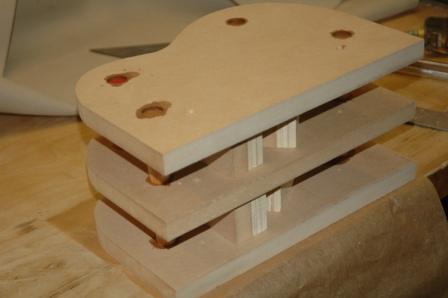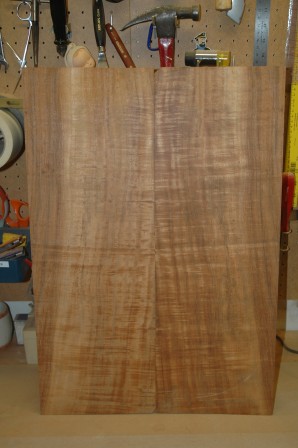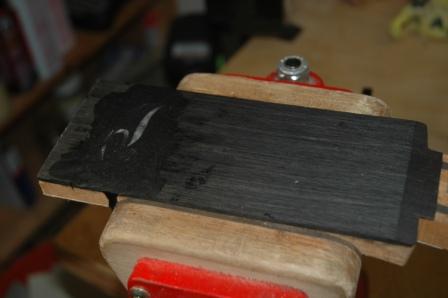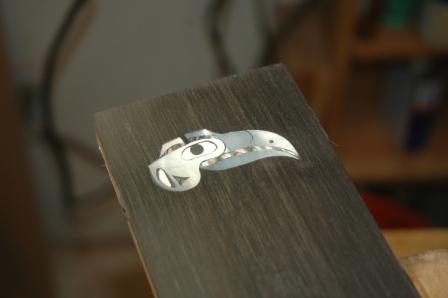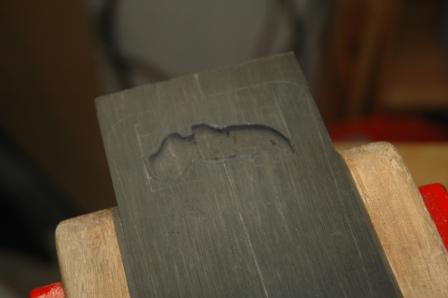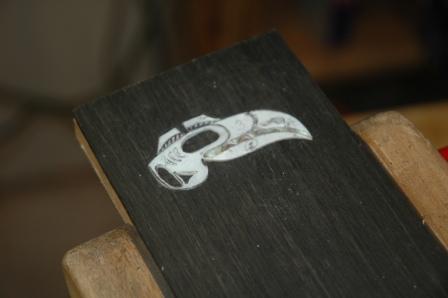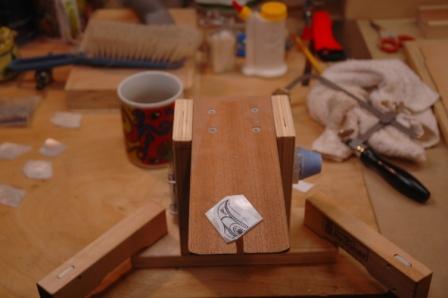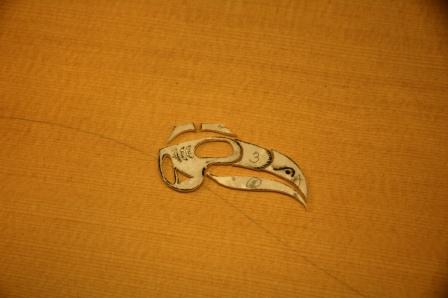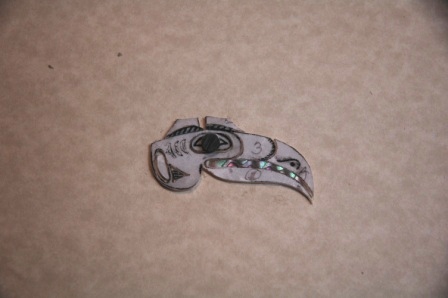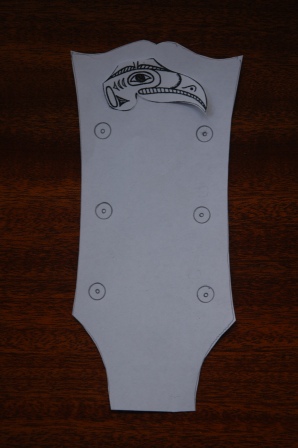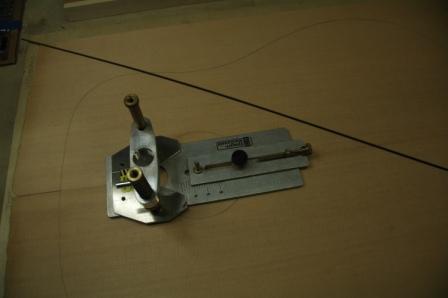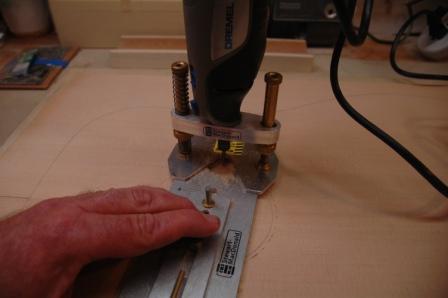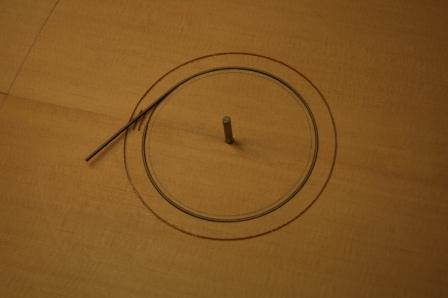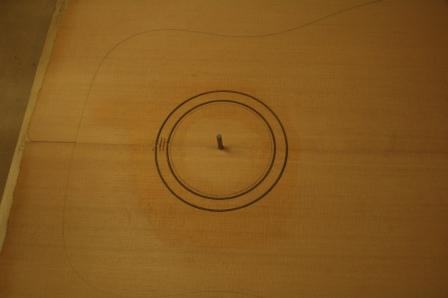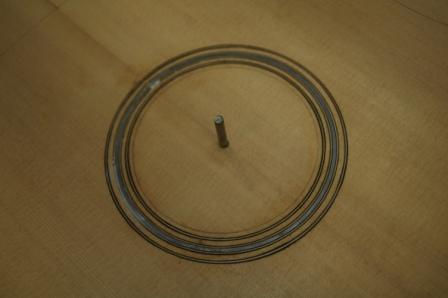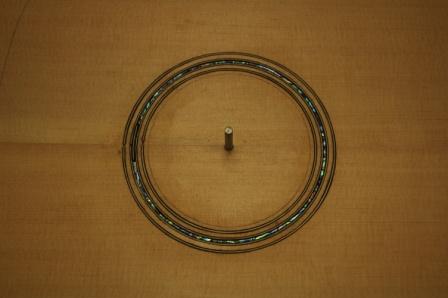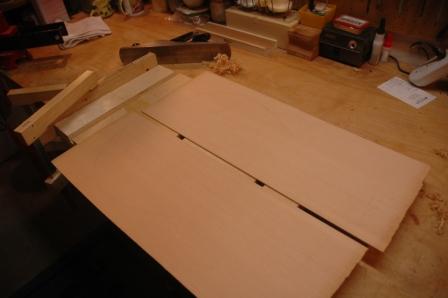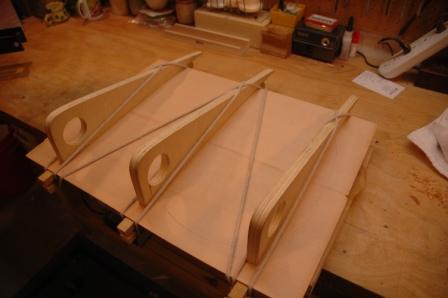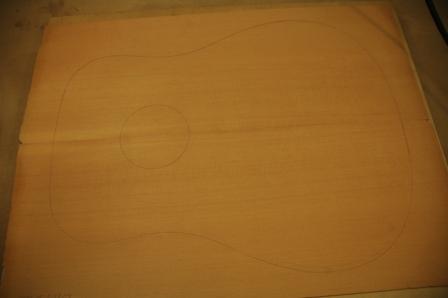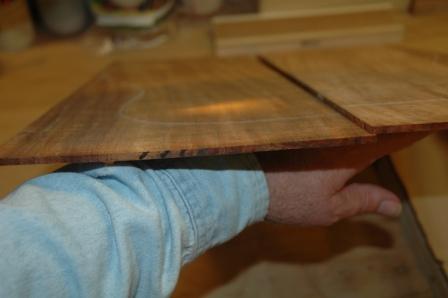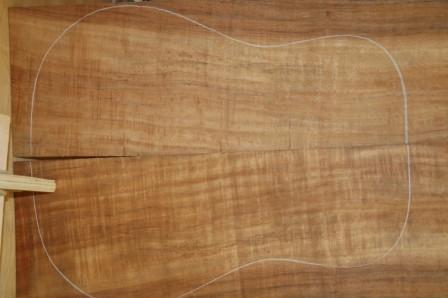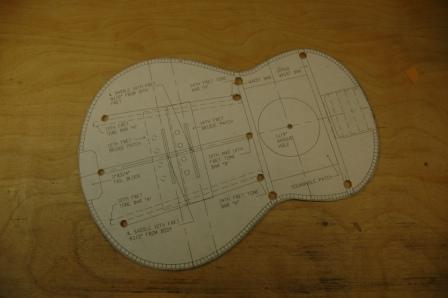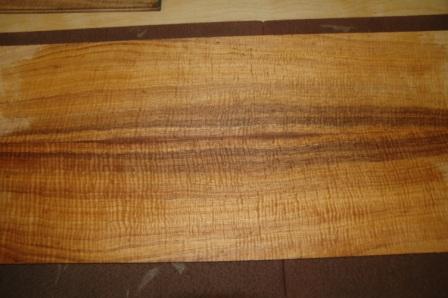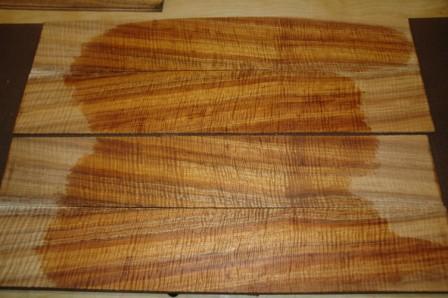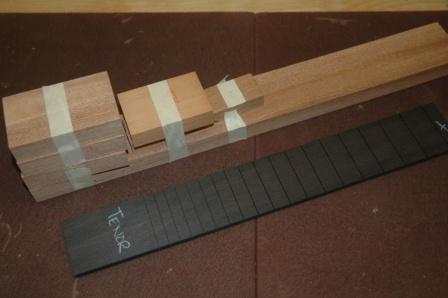Ukes – Bending Mold
September 28, 2010
Now that I’ve settled on Tenor as the size for my first uke constructions, I need to make jigs and molds. The side bending mold, which fits into my side bending machine will be the first to tackle.
The mold is constructed from three pieces of MDF joined with 3/4″ dowel. The master template shape is derived from the plexiglass template I created from the uke plans. I rough cut 3 pieces of MDF for the bending mold and final shaped the first template piece.
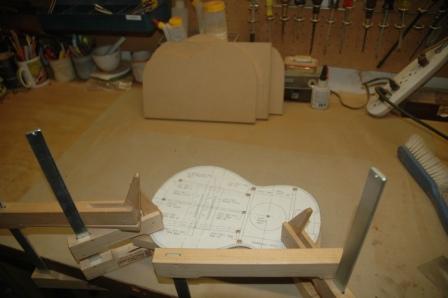
Once this piece is properly shaped, it’s used as a guide to shape the next two plates. A router bit with bearing is used to do the finish shaping.
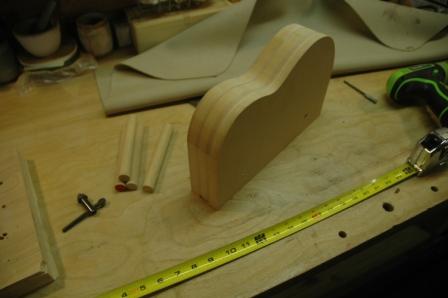
3/4″ holes are drilled into the plates to accept dowels, 4 @ 6″ lengths. The plates are separated and held in place with spacers as the dowels are pressed into the holes. CA glue is flooded into the seams, and voila, a side bending mold. A channel needs to be sawn out at the waist to accept the holding plate on the screw press, then side bending can commence!
